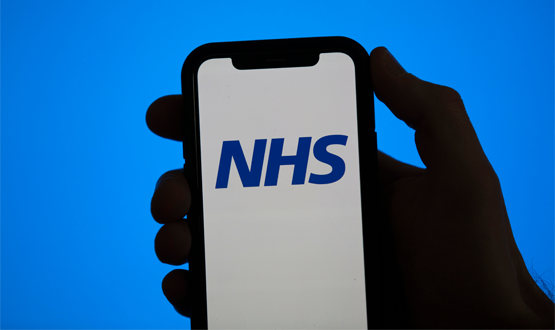Thinking about virtual wards is maturing – and so is technology
- 7 June 2022

In April 2022, NHS England issued guidance on the “enablers of success” for virtual wards. Ewa Truchanowicz, the managing director of Dignio, says the advice shows that thinking about digitally enabled care is maturing – and the technology required is maturing with it.
The NHS is starting to recover from the worst effects of the Covid-19 pandemic, but it remains under enormous pressure. To create additional capacity, NHS England is asking all integrated care systems to expand or introduce virtual wards.
In its priorities and operational planning guidance, issued in December, it said an “essential requirement” for the year ahead is to create the equivalent of 5,000 general and acute beds. To achieve this, it said every ICS [Integrated Care System] should be aiming to create 40-50 virtual ward beds per 100,000 people.
More recently, NHS England has followed up with more or detailed guidance, or what it calls “enablers for success” for virtual wards and hospital at home services.
The enablers document outlines service models and explains how some of their set-up costs can be met from bids to a temporary Service Development Fund with £200 million to distribute this year and an additional £250 million to distribute in 2023-24.
Recognising the importance of models and technology
The enablers guidance is significant because it shows how thinking about virtual wards has matured. The operational priorities and planning guidance focused on making sure that the right patients are admitted to virtual wards, so they reduce pressure on hospitals and don’t become just another community service.
It put less emphasis on staffing and technology; but the enablers document is explicit. It says a virtual ward must work to a standardised clinical model and be enabled by technology.
It goes on to define technology enablement as “the management of patients via a digital platform, managed remotely by a clinical team” within a model of integrated care. However, it recognises that different areas are at different levels of maturity.
Some are struggling to get good networks, interoperable systems, and appropriate data structures in place, while others are much further along.
With one of our UK customers we have gone from running a council-funded pilot to prevent unnecessary hospital admissions for care home residents, to supporting a Covid-19 virtual ward, to rolling out Hospital at Home services.
Two years to develop strong foundations
The criteria for bidding for SDF money indicates that it is primarily intended to support those less mature areas. While it’s disappointing that more advanced projects may find it difficult to use this match-funding to expand further, it should help less mature areas to take the first step.
It will enable them to put good infrastructure in place, to see what works and what doesn’t. Another good feature of the enablers document is that it is very strong on measuring success. It says that ICSs that secure funding from the SDF must use a bed benefit tool to show that their virtual wards are a better way of expanding capacity than staffing traditional hospital beds.
I hope this will become a mechanism for sharing best practice, and for providing support to areas that need it. That way, it’s much more likely that all ICSs will be able to run virtual wards and hospital at home services business as usual when the fund is withdrawn at the end of 2023-24.
Rapidly maturing technology
If thinking on virtual wards has matured, then the technology that is required to support them has matured as well. Virtual wards need a technology provider that can run questionnaires and collect readings from remote monitoring devices.
That data needs to be collated by apps that patients, their families and carers can use to send information to a digital platform. The platform needs to support care plans for each patient, and the data needs to be risk stratified, so the clinical team isn’t overwhelmed by alerts.
The platform also needs to make it easy for the clinical team to message or call patients and to communicate with other services. The good news for the NHS is that many providers have entered the market with platforms that can do this; so areas looking for a technology partner can focus on finding a solution that is usable and flexible.
Digital platforms: look for usability and flexibility
Our experience from our home country of Norway, where the government is actively promoting integrated, digitally enabled care, and from our NHS customers, is that usability is critical.
Managers and clinicians who are involved in virtual ward projects need to focus on setting up care pathways, and supporting change management, and onboarding fellow professionals and patients. They don’t have time to worry about digital; they need technology that “just works”.
At the same time, they need a solution that is future proof. ICSs and trusts shouldn’t be trying to support patients with different conditions on different platforms. They should be looking for a platform that is disease agnostic, with components that can be used easily to support new pathways.
From digitally-enabled care to prevention
I am pleased to see the publication of the enablers guidance and even more pleased by the maturity of its thinking. This is supported by maturity in the technology market. There is no longer a gap between central bodies, such as NHS England, and the ICSs and trusts that need to build their guidance into their strategies. Virtual wards are being developed at speed.
Instead, the gap is between the organisations tasked with rolling out virtual wards and the clinical teams that will be running them on the ground. They need technology to work safely and efficiently; and they need the right technology, which means systems that are mature, usable and flexible – and, of course, constantly evolving in line with new requirements and client feedback.
Once they’re in place, I want to see us get into the prevention piece. Because we shouldn’t be waiting until people are so sick, and have such complex needs, that we need to develop more and more sophisticated ways to care for them. We should be stopping them from getting sick in the first place.




